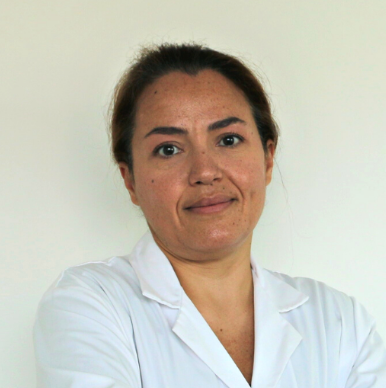News
Article
Hemophilia Reports
Patients with Hemophilia A Without Inhibitors Have Low Physical Activity
Author(s):
Presented at ASH 2023, a new study demonstrated physical activity does not increase bleeding for patients with hemophilia A as patients with low physical activity still experienced frequent bleeding.
Marisa Elisa Mancusco, MD, PhD
Credit: IRCCS Humanitas Research Hospital

Physical activity does not cause severe bleeding in patients with Hemophilia A, according to new research.1
Hemophilia A, a clotting disorder, may lead to the disabling condition of hemophilic arthropathy, characterized in part by chronic joint pain. Hemophilia A can also cause impaired function—reducing physical and social activities, ultimately impacting an individual’s quality of life.
Patients with hemophilia sometimes worry physical activity would increase the risk of bleeding. Until the mid-1970s, clinicians told their patients with hemophilia to avoid exercising due to the misbelief of physical activity increasing the risk of bleeding. Today, patients with hemophilia A are encouraged to exercise, and the World Federation of Hemophilia recommends people with this condition to focus on muscle strengthening, coordination, general fitness, body weight, and self-esteem.2
A new study, presented by Marisa Elisa Mancusco, MD, PhD, from the IRCCS Humanitas Research Hospital in Rozzano, Italy, on December 10th at the American Society of Hematology (ASH) 2023, also found physical activity does not increase the risk of bleeding in patients with hemophilia A without inhibitors.1
The multicenter cohort study occurred in 18 Italian sites and collected data on activity status, bleeding, quality of life, and health status through a wearable fitness tracker and an ePRO app. Participants included in the study had moderate or severe hemophilia A and received standard-of-care treatment without inhibitors. The investigators observed the participants for either 12 months or 18 months if a participant started therapy with a new drug during the study. The trial took place from January 2020 – April 2022.
The sample included 103 male patients, with 94.2% (n = 97) having severe hemophilia A and 5.8% (n = 6) having moderate hemophilia A. Participants were aged 15 – 50 years old, with 16.5% aged 12 – 17 years old, 44.7% aged 18 – 30 years old, and 38.8% aged 31 – 50 years old.
Primary outcomes included the length and type of physical activity, distance covered, calories burned, body weight, heart rate, sleep data, active minutes, metabolic equivalents for tasks, and step counts. Then, the secondary outcomes included physical activity by type and intensity, how the population adhered to World Health Organization (WHO) guidelines, disease severity, treatment routine for hemophilia, health status, joint health status, and body mass index.
Through the fitness tracker, the ePRO app recorded health-related quality of life questionnaires, joint health assessments, intensity of pain, and bleeding episodes. Only about half of the sample (52.4%) wore the fitness tracker for ≥ 10 hours in half their days for at least 6 months. Adolescents were the age group less compliant to wear the fitness tracker. Treatment adherence was poor, with a mean adherence of 55%. Also, only 26.2% of participants had an adherence of ≥ 80%.
The findings found mean EuroQol-5D (EQ-5D) visual analog scale (VAS) increasingly worsened during the study—after all, 43.7% (n = 45) of patients bled, with 18.4% having spontaneous bleeds, 34% traumatic bleeds, and 32% joint bleeds. Also, the tracker showed low physical activity rates for all activities, especially high-intensity physical activities.
Approximately half (51%) had sedentary behavior, and according to the health-related quality of life results, a sedentary lifestyle was associated with a worse quality of life, a greater risk of hospitalization, and worse joint status compared to active patients. According to the findings—which could be inaccurate due to poor treatment adherence—adolescents were 100% sedentary, participants aged 18 – 30 years old were 68.1% active and 31.82% sedentary, and participants aged 31 – 50 years old were 42.3% active and 57.69% sedentary. Overall, 48.15% of participants were active and 51.85% were sedentary (P = .0088).
At least 1 bleeding was reported in 43.7% of participants, with a mean of 2.9 bleedings. Bleeding frequencies were higher in sedentary participants. Two days before the bleeding, participants’ physical activity was comparable to the observational period. The study demonstrated “lower-than-expected physical activity” for patients with hemophilia A without inhibitor treatment.
“Despite the poor [physical activity], around half of the subjects reported bleeds, especially in the sedentary population,” the investigators wrote. “This suggests that other causes than [physical activity], such as treatment adherence and type of treatment, might affect the number, frequency, and severity of bleedings.”
References
- Mancusco, M, Biasoli, C, Marino, R, et al. 663 Physical Activity, Bleedings and Quality of Life in Patients with Haemophilia a without Inhibitors - a Multicenter, Observational Italian Study with a Wearable Device. American Society of Hematology. December 10, 2023. https://ash.confex.com/ash/2023/webprogram/Paper179089.html. Accessed December 13, 2023.
- Physical Activity and Exercise for Hemophilia. Hemophilia News Today. https://hemophilianewstoday.com/living-with-hemophilia/physical-activity-exercise-for-hemophilia/. Accessed December 13, 2023.





